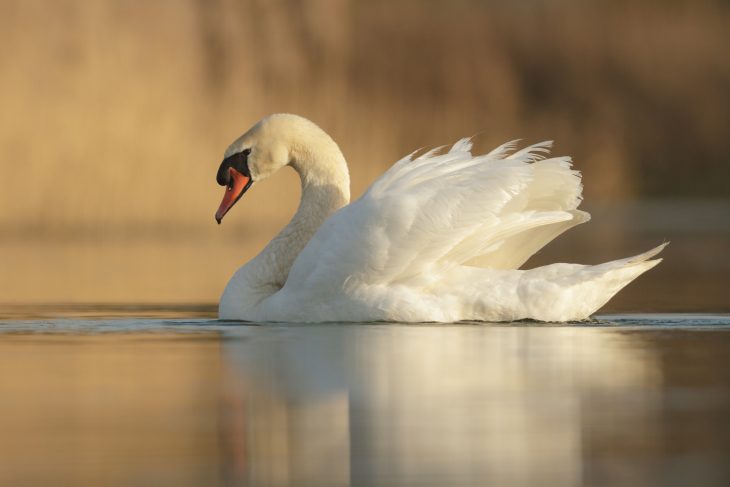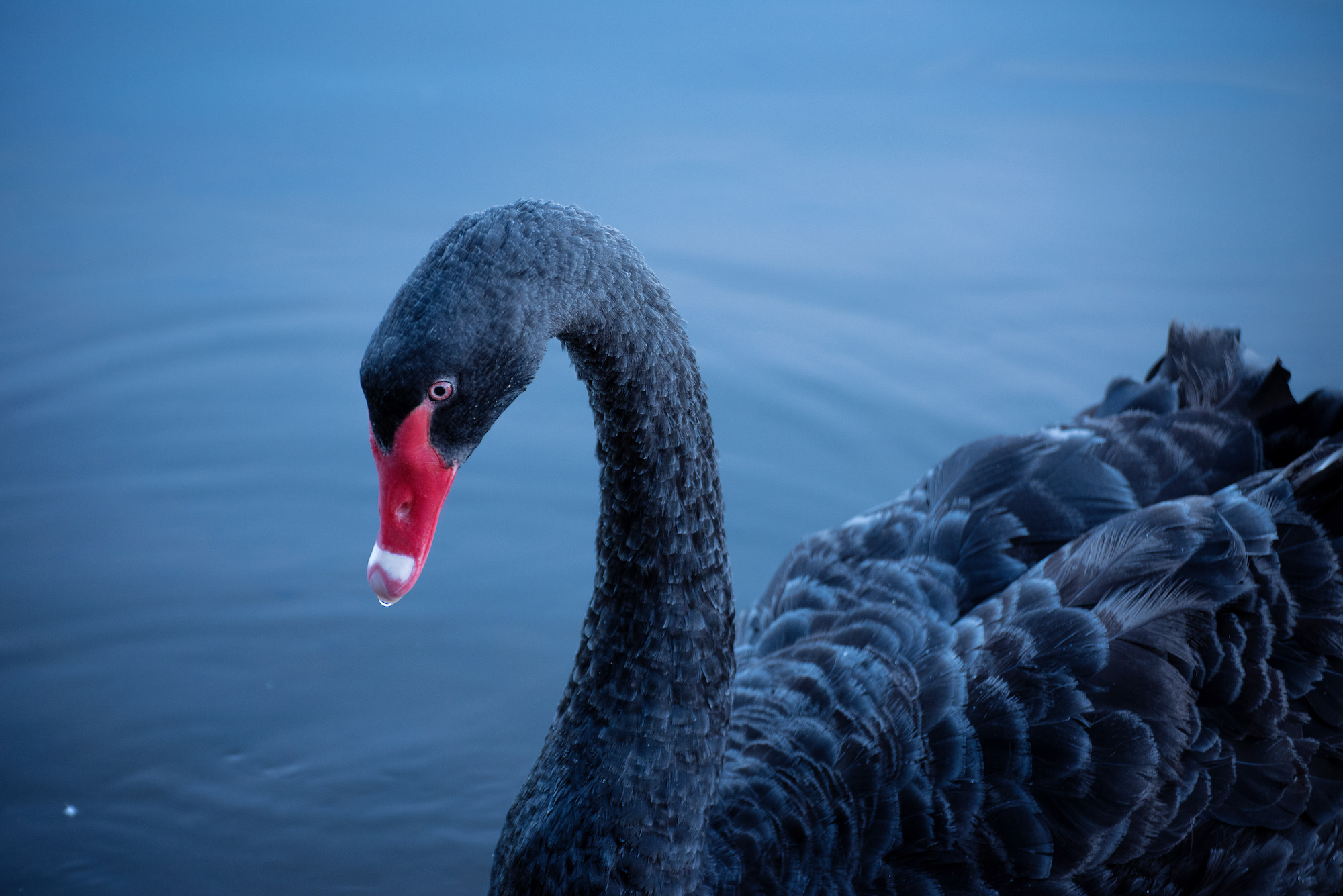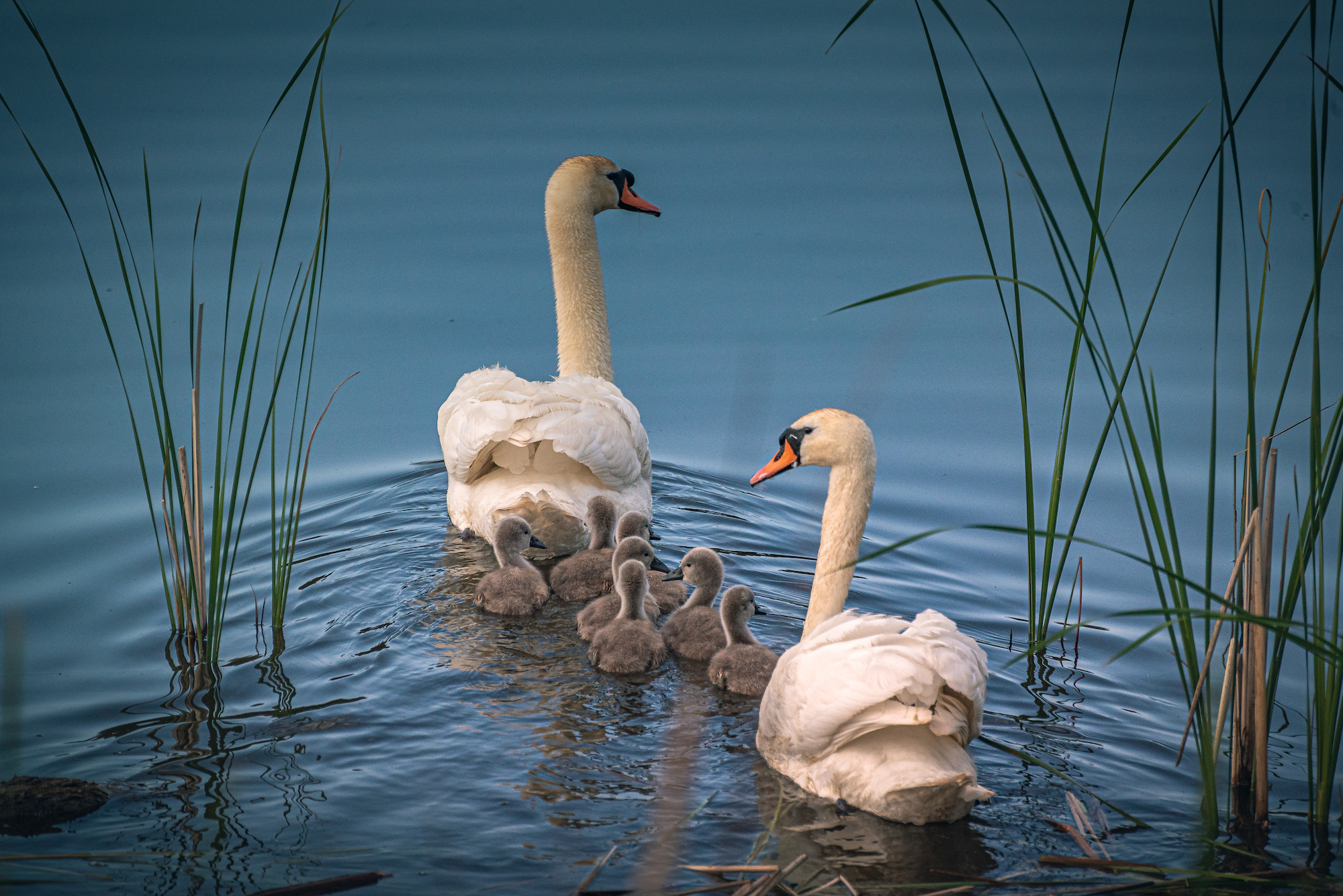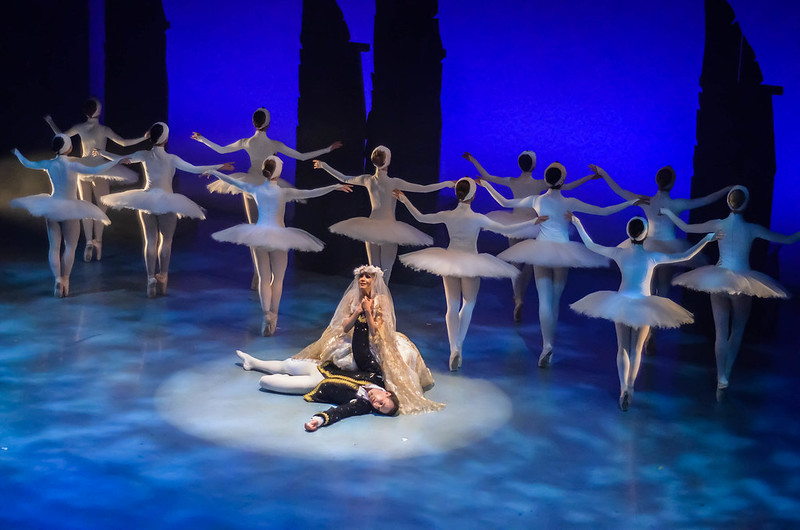
Swans, with their majestic presence and graceful movements, have captured the imagination of humans for centuries. These elegant water birds, often associated with beauty and grace, are known for their serene presence on lakes and rivers. In this comprehensive article, we will delve into the enchanting world of swans, exploring their fascinating characteristics, habitats, behaviors, and more. So, let’s embark on a journey through the shimmering waters and discover the captivating secrets of swans.
Swan Species and Varieties
Swans belong to the Anatidae family and are divided into several species, each with its own distinct characteristics and distribution.
Mute Swan (Cygnus olor)
The Mute Swan is one of the most well-known and recognizable swan species, known for its bright white feathers, long neck, and orange bill. It is native to Europe and has been introduced to various parts of the world.
Trumpeter Swan (Cygnus buccinator)
The Trumpeter Swan is the largest species of swan native to North America. With its deep, resonant call and an impressive wingspan, it is a sight to behold.
Tundra Swan (Cygnus columbianus)
The Tundra Swan, also known as the Whistling Swan, is another North American species. It is characterized by its distinctive, high-pitched call and migratory behavior.
Black Swan (Cygnus atratus)
The Black Swan is native to Australia and is renowned for its striking black feathers and bright red beak. It is a symbol of beauty and elegance.

Plumage
Most swan species exhibit beautiful white feathers, although some, like the Black Swan, have unique colorations. The feathers are designed to repel water and keep the bird dry.
Long Neck
Swans have long, flexible necks that allow them to reach underwater vegetation while swimming. They can also elongate their necks in a graceful S-shape while in motion.
Webbed Feet
Swans have large, webbed feet, ideal for propelling them through the water. This adaptation enables them to navigate lakes, rivers, and marshlands with ease.
Powerful Wings
Swans have strong wings that span several feet, allowing them to take flight and migrate long distances.
Elegance in Movement
Swans are known for their elegant and regal swimming style, gracefully gliding across the water with a seemingly effortless motion. Their movements exude a sense of tranquility and serenity.

Territorial Nature
Swans are territorial birds, fiercely defending their nesting areas and offspring. They may engage in aggressive displays to ward off intruders, such as flapping their wings or hissing loudly.
Vocalizations
Swans communicate through a range of vocalizations, including soft honking, hissing, and trumpeting calls. These vocalizations serve various purposes, such as signaling danger, establishing territory, or expressing courtship.
Habitats and Distribution
Swans inhabit a range of aquatic habitats, including lakes, ponds, rivers, and coastal areas. Their distribution varies depending on the species.
Generally, Mute Swans can be found in Europe, Asia, and parts of North America. Trumpeter Swans, on the other hand, are native to North America, particularly in Canada and the northern United States. Tundra Swans, however, breed in the Arctic regions of North America and migrate south during the winter. Black Swans are endemic to Australia but have been introduced to various parts of the world.
Pair Bonding
Swans are known for their strong pair bonds that often last a lifetime. Once they find a mate, they engage in courtship rituals that involve synchronized head movements, wing displays, and vocalizations.

Nesting and Egg-Laying
Swans build large nests made of reeds, grasses, and other vegetation near the water’s edge. The female lays a clutch of eggs, typically 4-7 in number, and both parents take turns incubating them.
Incubation and Hatching
The eggs are incubated for around 35-40 days. During this period, the parents diligently tend to the eggs, rotating them to ensure even warmth. Once the eggs hatch, the cygnets, or baby swans, emerge.
Cygnet Development
Cygnets are born with gray or brown feathers and are cared for by their parents. They stay close to their parents for protection and learn essential skills such as foraging for food and swimming.
Flight and Independence
As the cygnets grow, their feathers change to resemble adult plumage. They practice flapping their wings and eventually take their first flights. At this stage, they become more independent and gradually leave their parents’ territory.
Legal Protection
Many swan species are protected by laws and regulations to prevent hunting and poaching. These measures aim to safeguard swan populations and maintain their ecological balance.
Educational Initiatives
Raising awareness about swans and their conservation needs is vital. Educating the public about the importance of preserving wetland ecosystems and minimizing human disturbances can contribute to their long-term survival.
Cultural Significance
Swans are often associated with love and partnership in many cultures and folklore. They symbolize loyalty, devotion, and the unbreakable bond between mates. Moreover, in various mythologies and spiritual traditions, swans embody purity, transformation, and the connection between the earthly and spiritual realms.
Swans’ graceful movements and serene presence have also inspired many artistic representations. This includes ballet performances, and poetry, representing beauty, grace, and elegance
Greek Mythology
In Greek mythology, swans were associated with the gods Apollo and Aphrodite. They were believed to possess the power of prophecy and were seen as messengers between the mortal and divine realms.
Celtic Folklore
Swans held a special place in Celtic folklore, representing love, beauty, and grace. They were also associated with the Otherworld and were believed to carry the souls of the departed.
Swan Lake: A Timeless Tale
One of the most iconic representations of swans in popular culture is the ballet “Swan Lake” composed by Pyotr Ilyich Tchaikovsky. This timeless masterpiece tells the story of a princess transformed into a swan by an evil sorcerer’s curse. The ballet beautifully captures the essence of swans’ grace, tragedy, and eternal love.

Conclusion
As we unravel the enchanting world of swans, it becomes evident why these avian beauties have inspired countless stories, poems, and artistic creations throughout history. Their grace, elegance, and serene presence continue to captivate our hearts and remind us of the ethereal beauty of the natural world.
Frequently Asked Questions (FAQs)
Do swans mate for life?
Yes, swans are known for their strong pair bonds and often mate for life. However, in some cases, if a mate dies, a swan may find a new partner.
Can swans fly?
Yes, swans are capable of flight. While they are primarily known for their elegance on water, they have powerful wings that enable them to take to the skies.
Are swans aggressive?
Swans can display territorial behavior and may become aggressive during the nesting season when they are protecting their nests and young. It is important to respect their space and avoid disturbing them.
What do swans eat?
Swans are herbivorous and primarily feed on aquatic vegetation such as pondweed, water lilies, and grasses. They may also consume small insects and mollusks.
Are swans found in both saltwater and freshwater habitats?
Swans are predominantly found in freshwater habitats such as lakes, ponds, and rivers. However, some species, like the Mute Swan, can tolerate brackish water and may occasionally be found in coastal areas.
Was this page helpful?
Our commitment to delivering trustworthy and engaging content is at the heart of what we do. Each fact on our site is contributed by real users like you, bringing a wealth of diverse insights and information. To ensure the highest standards of accuracy and reliability, our dedicated editors meticulously review each submission. This process guarantees that the facts we share are not only fascinating but also credible. Trust in our commitment to quality and authenticity as you explore and learn with us.
